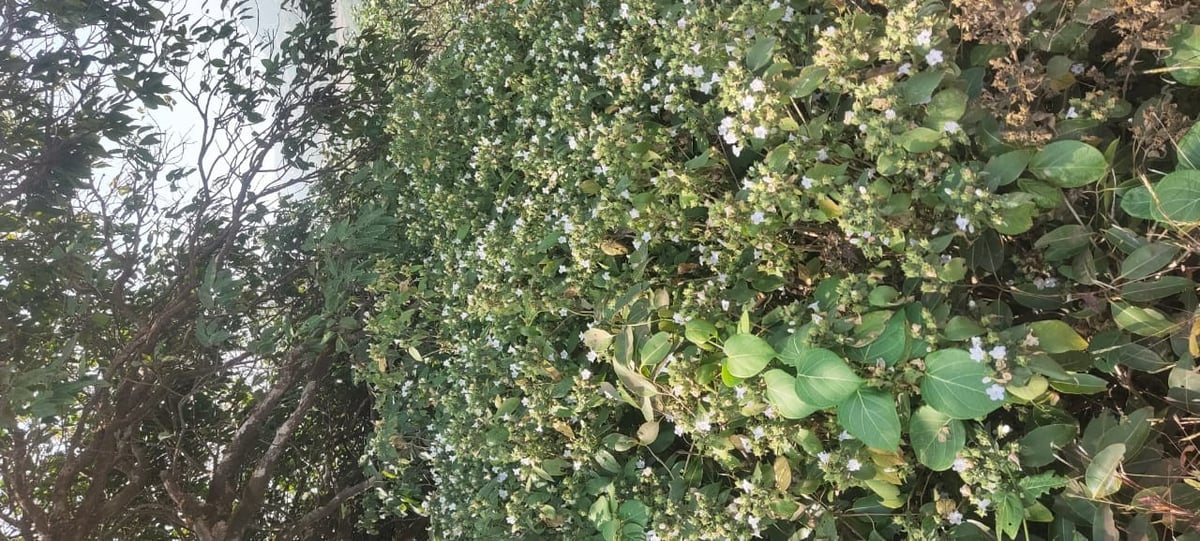Mahabaleshwar: Rare Whayati Plant Blooms in Satara, Offering Beekeepers a Unique Opportunity for Medicinally Rich Honey Production |
Satara district, blessed with biodiversity, is adorned with natural beauty, and the world heritage site of the Kaas plateau and its surroundings add to its charm. Every year, Kaas and its surroundings bloom with various types of colorful and attractive flowers.
Usually, from mid-August to the beginning of October, many natural flowers bloom in this area. When the blossoms fade, only green trees are visible! However, this year, a beautiful flower discovery is being experienced in this area — the Whayati plant with white flowers! This sight has become the center of attraction for tourists, students, and researchers who study plants. For beekeepers, who are involved in the beekeeping business, this is a treat.
What is Whayati?
The plant, which belongs to the shrub class and blooms in the Western Ghat Sahyadri region, is the Whayati type of plant. Its scientific name is Thelepaepale ixiocephalus, belonging to the Acanthaceae family. It grows to a height of 5 feet and flowers once every eight years. The flowers are white, and all types of bees (Phulori, Sateri, Agya, Melifera, Trigona) work on these flowers to collect honey and pollen. When a plant blooms, the flowers’ nectar is collected by bees, and once flowering is over, the seeds fall to the ground and germinate the next year. After eight years, the plant flowers again, and the bees collect both nectar and pollen. Honey is produced from the nectar, and the collected pollen is used as food for the bees’ hives.
As the Whayati, scientifically known as Thelepaepale ixiocephala, species blooms once in eight years in the hilly town of Mahabaleshwar, the Maharashtra Beekeeping department has appealed to beekeepers to make the most of the opportunity to produce medicinally rich honey this season.
The flowering period of this plant is from November to December. However, in the Sahyadri Ghat area, the flowering will last until January in some places. The villages where the plant is in bloom are Andhari, Phalni, Umbri, Ghatai Mandir, Munawale Kaas (Kaas area), Renoshi, Kharoshi, Rule, Shirnar, Dabhemohan, Kotroshi (Koyna Khore area), Gavdhoshi, Vylane, Avalan, Aarav, Nivali, Akalpe, Dare Tamb, Pimpri, Lamaj, Uchat, Waghawale, Valvan, Parvat, Saloshi (Kandati area).
Special honey
The honey produced from the pollen grains of these flowers has distinct characteristics. The color of the honey is white-yellow. Due to the glucose present in white honey, the granulation of honey (honey turning into crystals) occurs quickly in the cold, i.e., in 20 to 30 days. This white-yellow honey is consumed with toast, bread, syrup, or chapati. The taste of honey is sweet and delicious, and it is also a multi-purpose medicine, in great demand. Honey is a stimulant and is used to strengthen muscles and quickly overcome weakness.
Digvijay Patil, former director of the Honey Directorate in Mahabaleshwar, while speaking about this, said “Beekeepers should move their hives closer to the flowers. Purchase wax sheets from the Honey Directorate and apply them to the super frames to attract the honey, ensuring maximum honey collection in the coming season. Old damaged hives should be drained, and wax should be prepared from them. New hives should be prepared by applying wax sheets to the empty frames. Weak honey colonies with few bees should be strengthened. The number of colonies can be increased by implementing queen breeding and colony breeding programs, and the empty hives should be filled with colonies. The colonies should be increased by dividing them. Ripe honey should be collected from the sealed super hives. Botany students should collect the pollen of white honey, separate the pollen, and study its structure. The structure of the pollen is spherical, with triangular thorns on it. Pollen slides should be prepared and kept as specimens. The plant should be collected and preserved in a herbarium.”
